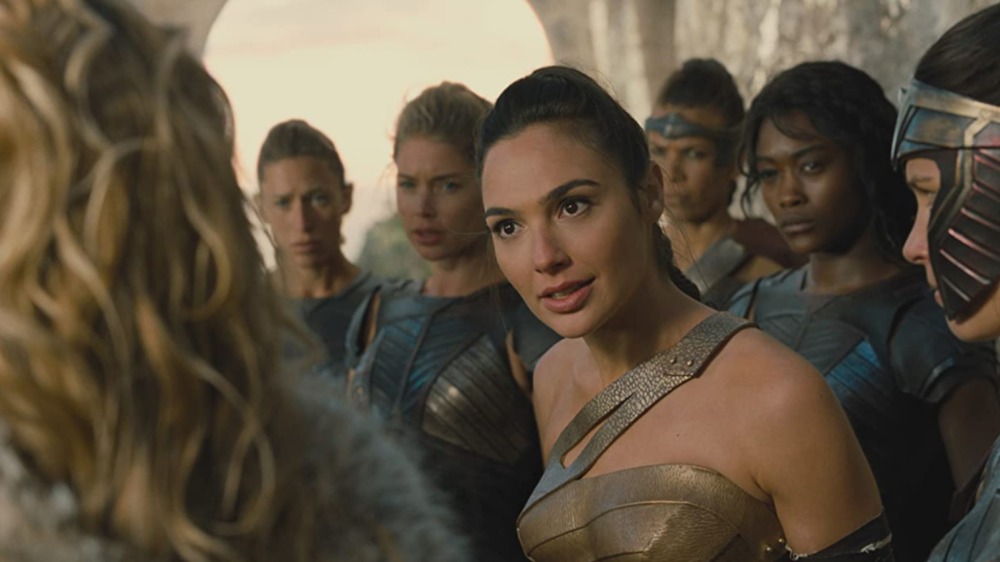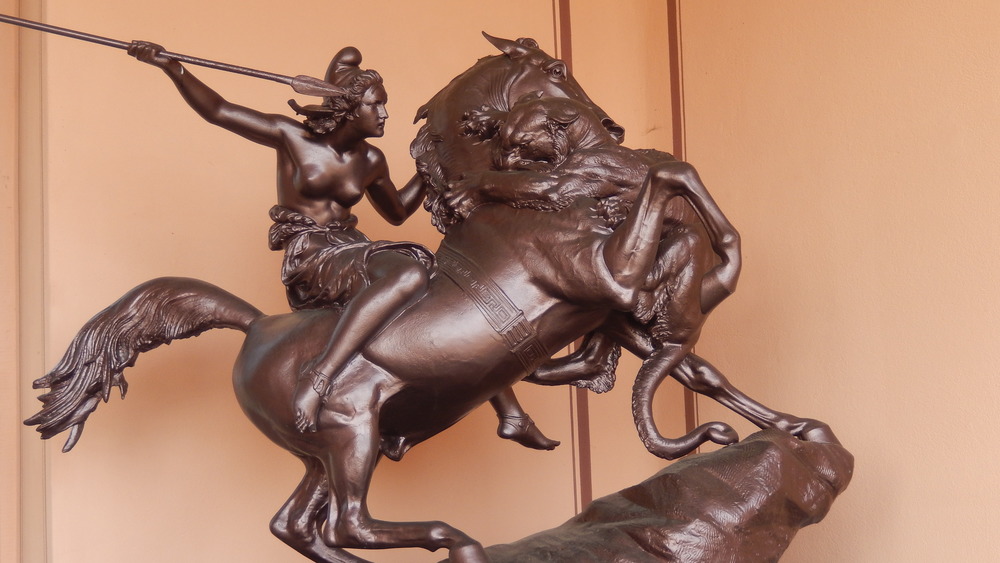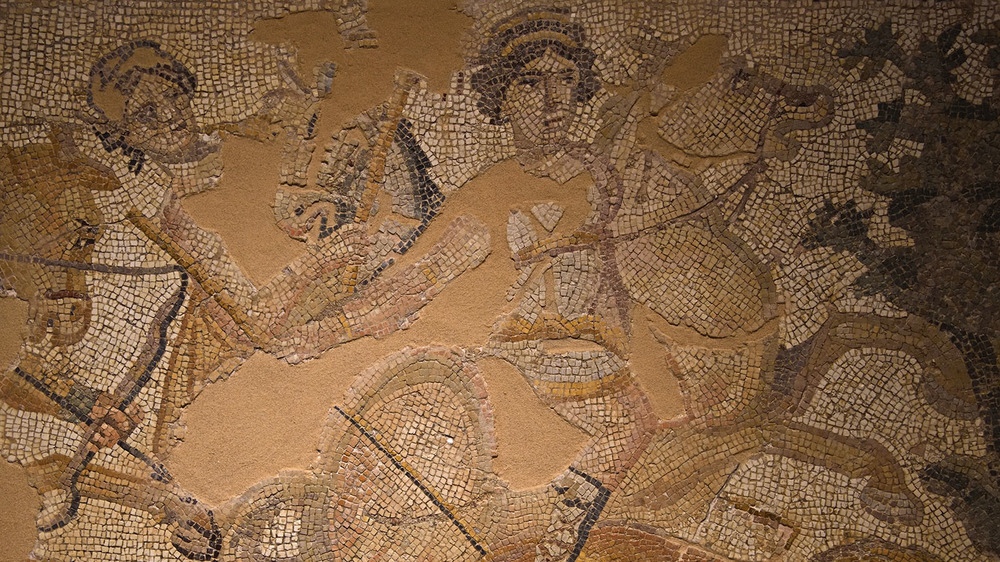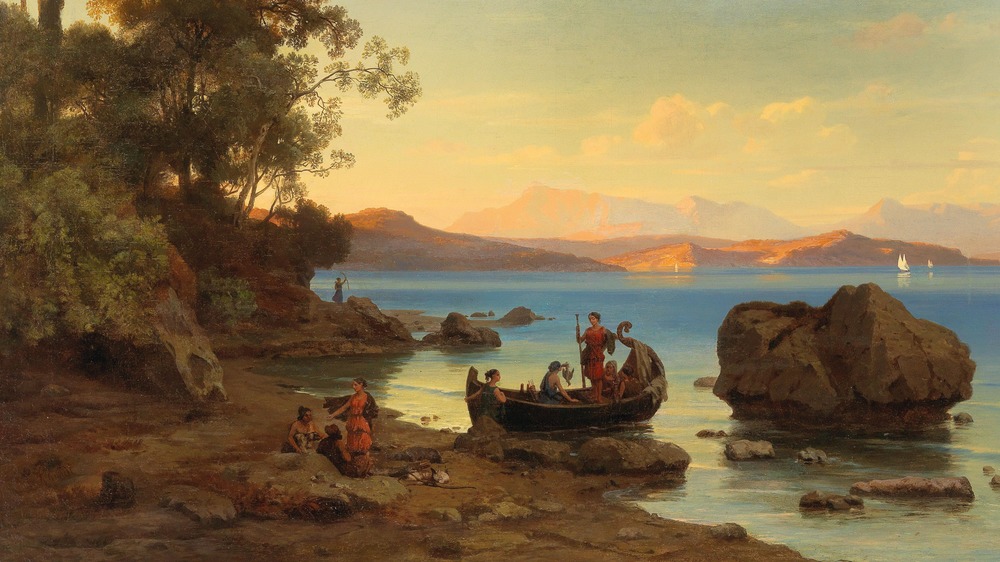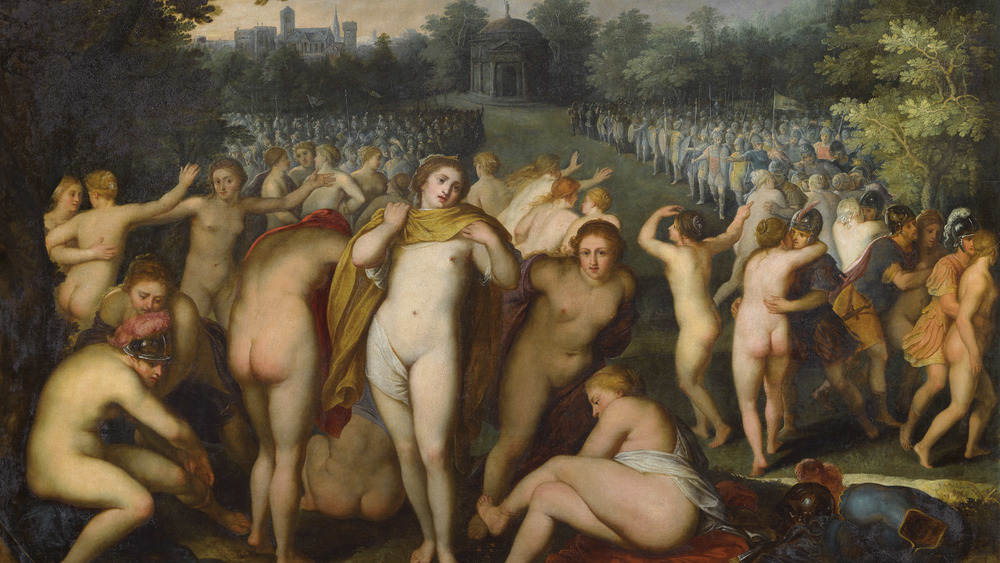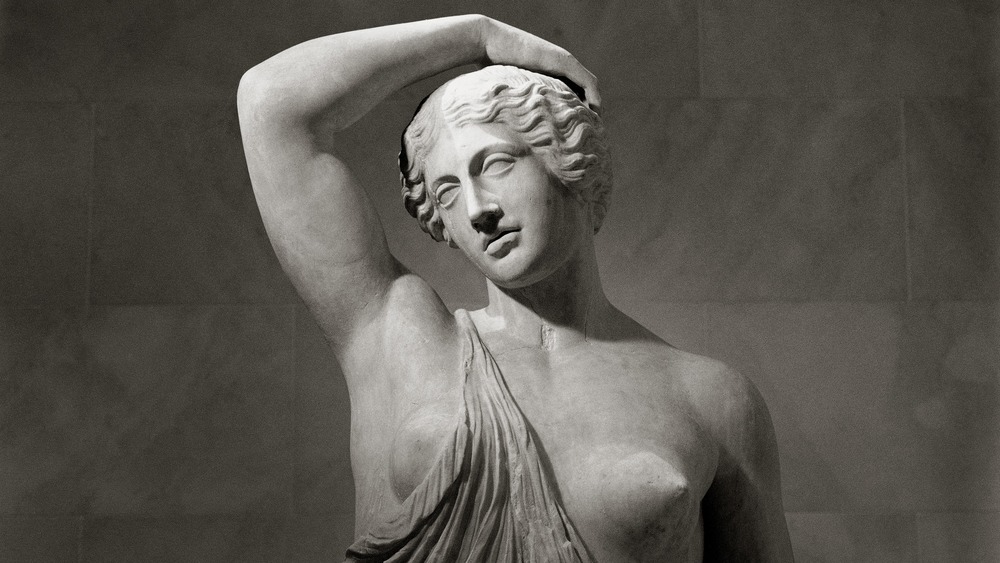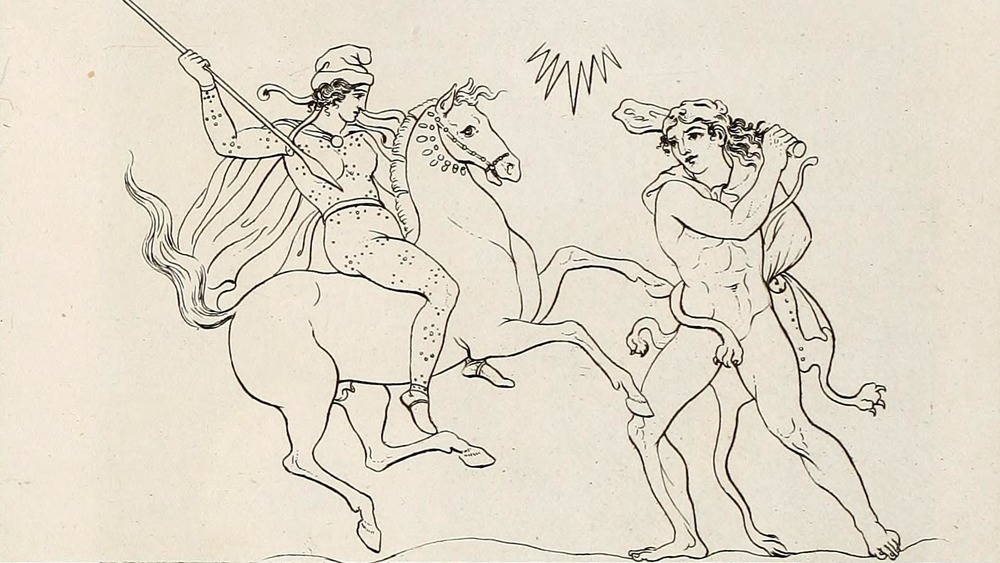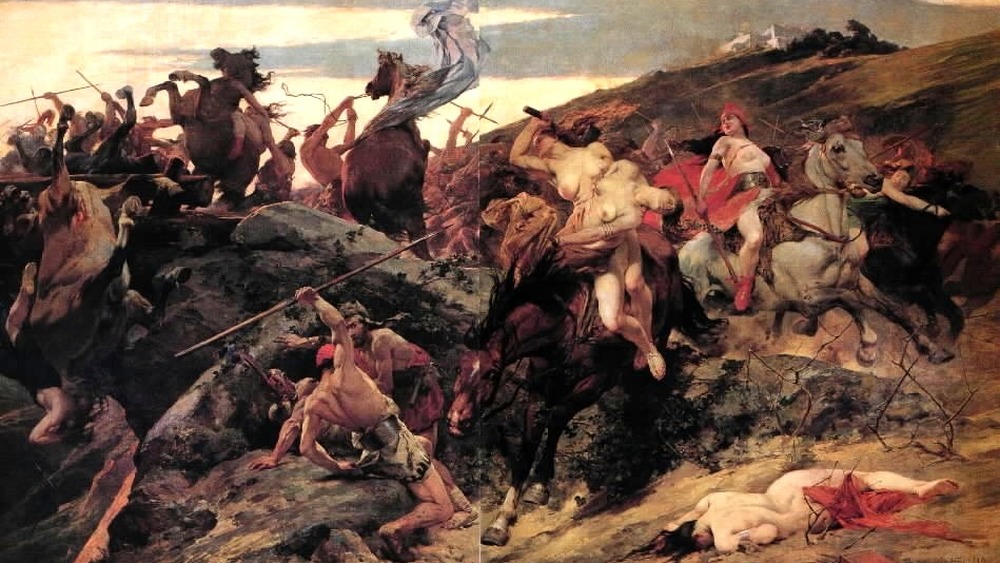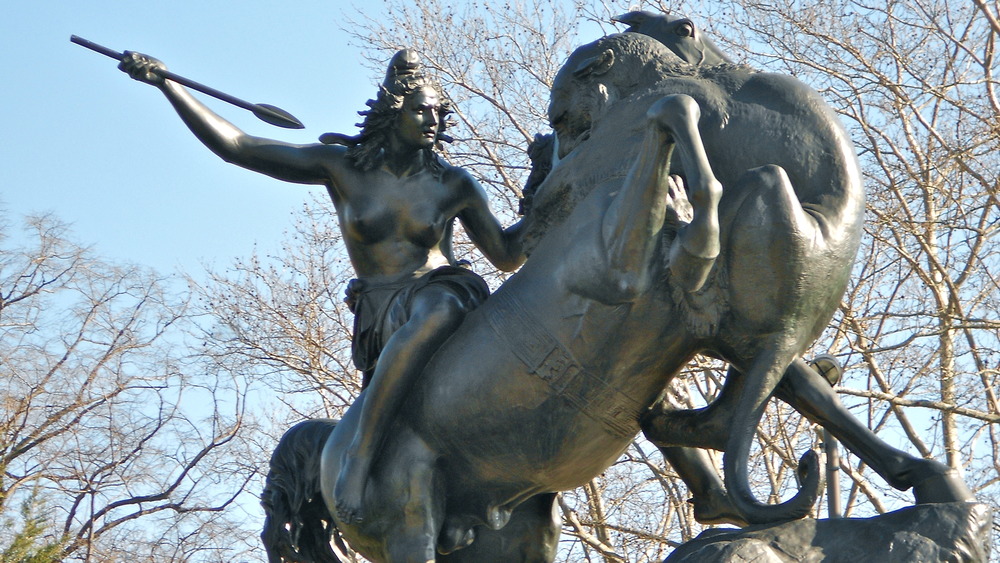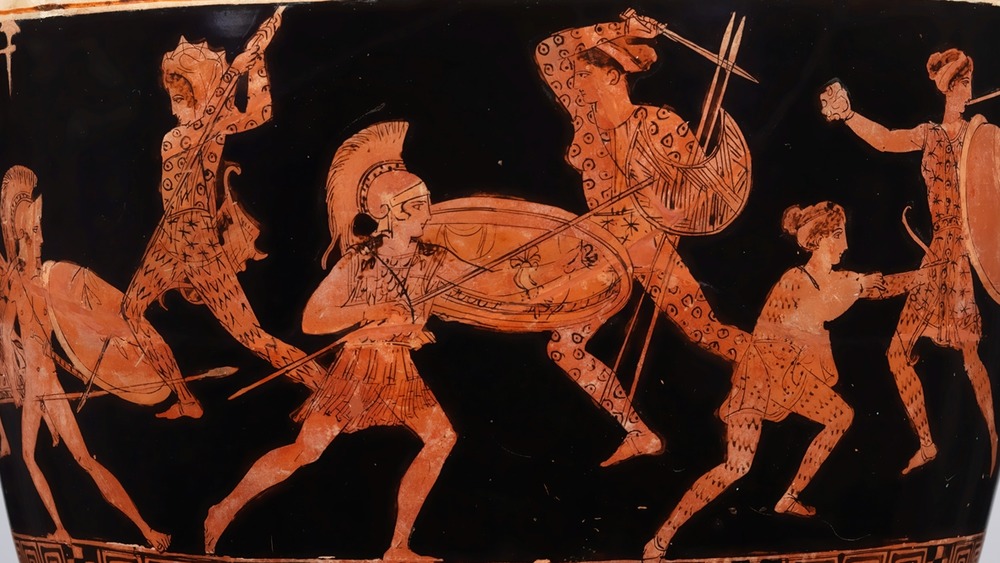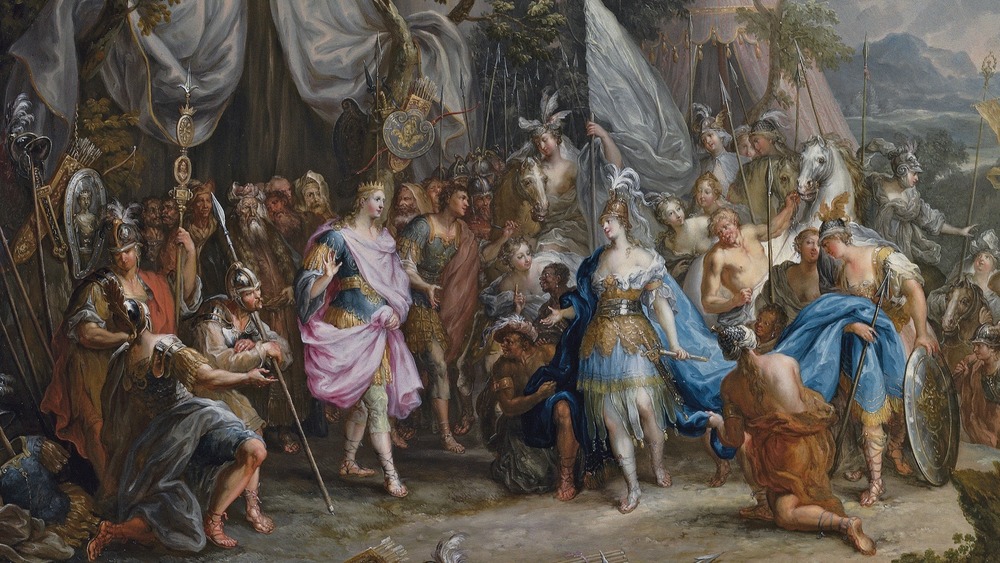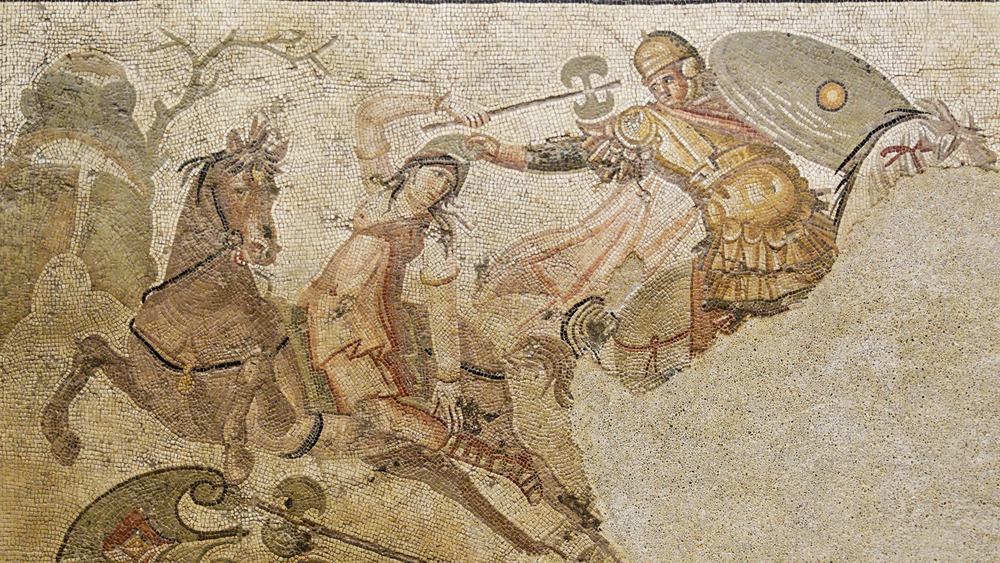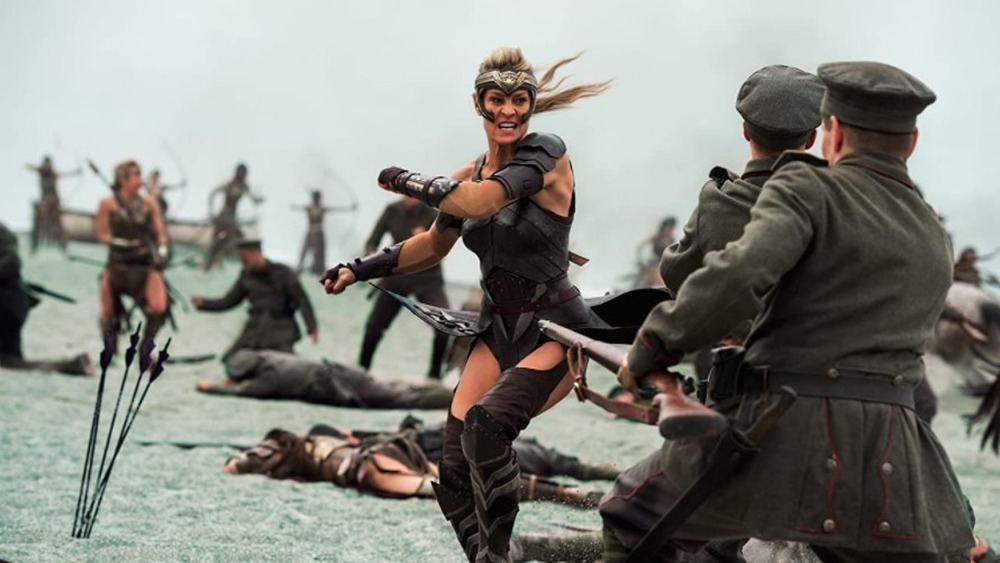Themyscira: The Home Of The Legendary Amazons Explained
The legendary Amazons inspired fear in the Ancient Greeks and wonder in modern comic and movie fans. In antiquity, a tribe of bloodthirsty warrior women who excelled at horse-riding and archery represented the specter of barbarism that lurked at the edge of the known world. In the Wonder Woman comics and movies, the Amazons represent the kind of society that is possible when independent women are removed from the constraints of Man's World. Whether in myth or in film, the Amazons make their home in a city-state called Themiscyra. (Well, maybe Themyscira.)
But what is Themiscyra? Where is it? What is life like there? Has anyone ever been there, you know, before Steve Trevor crash landed there during World War II? Is it somewhere you can go now? Most importantly, who is responsible for spreading the Gospel to the Amazons? Read on to explore the answers to all these questions and more!
Themiscyra or Themyscira?
When Wonder Woman debuted in 1941, she was revealed to be a member of a race of powerful women called Amazons who lived on a peaceful and technologically advanced land called Paradise Island, which had remained hidden from Man's World for centuries. Paradise Island remained the name of Wonder Woman's home until the comics series was rebooted in 1987 following DC Comics' major continuity reset, Crisis on Infinite Earths. Under the pen of writer/artist George Perez, Paradise Island was renamed Themyscira, inspired by the city said to have been the capital city of the Amazons from actual mythology.
Eagle-eyed readers will notice that this is a small change from the mythological city, which is spelled Themiscyra, with DC swapping the "i" and "y." The likely reason for this is that the comic book Themyscira and the mythological Themiscyra aren't exactly the same. For one thing, as History Daily point out, the original Themiscyra wasn't an island. It was the capital city of a region said to be on the coast of the Black Sea, at the mouth of the Thermodon River. This would situate it in northeastern Anatolia, an area we would recognize as Turkey today. In the comics continuity, Paradise Island was renamed to Themyscira in honor of their historical home, which the Amazons had abandoned after it had been destroyed, making their way to their new island home.
Where was the home of the Amazons?
The exact location of the comic book version of Themyscira is a little intentionally vague (its location is supposed to be hidden, after all), and it's also been known to move around some, even being transported to the Bermuda Triangle at one point. The mythological Themiscyra could be just about as difficult to pin down, as the location of the home of the Amazons tended to shift as the Greeks' understanding of geography shifted. As a tribe of warrior women, they were meant to represent something completely foreign to Greek ideas of society, which meant that the Greeks conceived of them as not only ideologically distant, but geographically distant as well. In this case, the Amazons were relegated to the extremes of the known world. So, as the book Religious Cults Associated with the Amazons records, the poet Aeschylus describes the home of the Amazons as being originally far to the north (by Greek reckoning), in what we know as Ukraine, though he does say that they would later move to Themiscyra, on the plain by the Thermodon.
Generally, however, the understanding was that Themiscyra was in northeastern Anatolia, by the mouth of what is now known as the Terme River on the southern coast of the Black Sea. Some ancient writers placed it further west in Turkey or even in Greece, but most, including NASA, locate it in Anatolia.
An idyllic home for a warlike people
In the comics series, Themyscira is typically portrayed as a paradise (as its former name of Paradise Island would indicate) where women engage in both physical and intellectual culture, giving them superhuman athletic prowess and advanced technology including invisible airplanes and purple lasers that can heal any wound. The mythological Themiscyra was typically depicted as a natural wonderland as well, though usually without the lasers and invisible vehicles. The Dictionary of Greek and Roman Geography describes Themiscyra as "a rich and beautiful district," which was always green and bountiful in its vegetation. This plentiful plant life was necessary for Themiscyra's innumerable herds of cattle and horses. The area was said to produce great quantities of the grains like pannick and millet, and the southern region produced a wide variety of fruits, including grapes, apples, pears, and nuts, as well as honey for which the region was famous. These were said to grow so abundantly that the Amazons couldn't even use them all, and the excess would go to waste still on the trees.
The Greek geographer Strabo says that the Amazons spent their time in farming, raising cattle, and–most of all–training horses. The strongest among the Amazons hunted on horseback and played war games among each other. It's not hard to see how writer William Moulton Marston and artist H.G. Peter conceived of the comic book version of the Amazons' home.
But how did they make new Amazons?
The very premise of the Amazons is that they are a race of exclusively women warriors who exhibited what the Greeks would have viewed as masculine characteristics such as brutality and aggression and who eschewed the typical domestic role of women in Greek society. The question may then occur to you, then: how does a society made up only of women not die out in one generation? Where do new Amazons come from? While the answers in the Wonder Woman comics have varied, typically Themyscira is depicted as being made up of a fixed number of immortal Amazons, and if you want a new one, you have to mold her out of clay or something.
The ancients, however, didn't believe that the Amazons were immortal, despite being descended from the god Ares. As the Encyclopedia Mythica explains, Greek legend held that the Amazons lived on the other side of a mountain range from a tribe of exclusively male warriors known as the Gargareans. Once a year, the two tribes would meet up in the mountains and do the do in order to make more Amazons and Gargareans. The female children would be raised by the Amazons, while the male children would either, depending on the source, be sent to the Gargareans or be put to death. The 2011 Wonder Woman series addressed this idea by saying the male children were secretly raised by the god Hephaestus.
That thing you heard about Amazons' chests is wrong
One of the most commonly held ideas about the Amazons is that they only had one breast, because they each cauterized off their right breast in order to use their right arms more freely for swinging swords, shooting bows, or throwing javelins. This legend goes all the way back into antiquity, with even the geographer Strabo repeating the idea (though it is probably worth noting that Strabo is pretty skeptical about the very existence of Amazons to begin with). As Smithsonian magazine explains, this idea can be traced back to a folk etymology that has roots going way, way back. The Greeks–and modern proponents of the "one-breasted Amazon" theory–believed that the word Amazon came from the prefix a-, meaning "without," and mazos, meaning "breast." (The actual Greek word for breast was mastos; compare words like mastectomy and mastodon. Bonus fact: did you know that "mastodon" means "boob tooth"?)
Anyway, the idea of a one-breasted Amazon can be pretty easily debunked by looking at literally any piece of classical art featuring Amazons (and there's a lot; they were a common motif), all of which feature two breasts. The legend of severing their breasts was almost certainly in response to the false etymology. In fact, the word Amazon probably isn't Greek at all, but rather a loanword from Persian meaning "fight as a group," a thing the Amazons were pretty famous for.
Hercules comes to Themiscyra
Probably the most famous mythological story about Themiscyra–and one that serves as the inciting incident in a number of Wonder Woman stories about the history of the Amazons–is the one in which Hercules (aka Heracles) invades the capital city of the warrior women in order to steal the girdle of their queen, Hippolyta. As Theoi Greek Mythology explains, Hippolyta's girdle was a gift from her father, the god Ares, as a sign of her authority and position of power over the Amazons. The Greek hero was assigned by King Eurystheus to go and obtain this magic girdle for his daughter Admete as the ninth task in Hercules's famous Twelve Labors.
As with most myths, there are many variations on this story, but the most common one says that when Hercules arrives in Themiscyra, he so impresses Hippolyta with his feats of strength that she agrees to simply give him her girdle to help him out. The goddess Hera, who hates Hercules, stirs up dissent among the Amazons by telling them that he was trying to abduct the queen. Then in the ensuing confusion, Hercules kills Hippolyta and takes the girdle, sadly fulfilling his mission. In other versions, Hippolyta survives the fray and Hercules gives her to his friend Theseus as a wife. That story doesn't end well for Hippolyta (or anyone) either. The comic book version typically frames Hercules as a jerk and villain.
The Amazons come to Troy
The Trojan War is one of the biggest events of Greek mythology, with an entire generation of heroes playing some role or other in it. It was basically the Infinity War of its day. While the main fighting forces were the various chieftains of Greece against the Trojans and their allies from around Asia Minor, armies from as far away as Ethiopia and India were said to have taken part, so it's no surprise that the war-hungry Amazons put in an appearance as well. Following the events of the Iliad in which Achilles has killed the Trojan prince Hector, the Amazons arrive to support the Trojan side, led by their queen Penthesilea. As Theoi Greek Mythology explains, Penthesilea may have come for mercenary reasons, or she may have been seeking redemption after accidentally killing her sister in battle.
Whatever the reason, the Amazons enter the battle against the Greeks, and Penthesilea makes her mark by slaying the Greek hero Machaon. In revenge, the greatest Greek warrior, Achilles, kills Penthesilea, but when he removes her helmet, he falls in love with the beautiful (if dead) Amazon queen. Another Greek named Thersites, the ugliest of all the Achaeans, teases Achilles for his crush and pokes Penthesilea's eye out with a spear. In a rage, Achilles kills his own theoretical ally, a murder for which he has to be ritually purified before returning to battle.
The Argonauts on Amazon Island
While the mythological version of Themiscyra isn't an island like the comic book and movie version is, there is one ancient Greek poem that does describe an Amazonian island. The Argonautica by Apollonius of Rhodes is the story of the hero Jason and his crew of superpowered demigods hunting down the Golden Fleece and encountering all sorts of weird monsters and supernatural phenomena. Book II of this third century BCE epic shows the Argonauts drawing close to Themiscyra and describes the Amazons as ruthless foes with no sense of mercy or justice. It goes on to explain that the Amazons didn't live all together in one city, but were broken up into three tribes scattered about the plain around the Thermodon: the Themiscyrans, the Lycastians, and the Chadesians, renowned for their skill with the javelin.
The Argonauts sail to the mouth of the Thermodon and prepare for battle with the Amazons. Zeus, fortunately, knows that this is a bad idea and sends the north wind to blow them away from Themiscyra, where they can see the bloodthirsty Amazons gearing up for battle. Nearby there is an island with a marble temple dedicated to Ares by the Amazon queens Otrera and Antiope. This island is full of countless deadly birds that dive like spears and shoot down razor-sharp feathers at the Argonauts. They barely manage to escape and save four men who had been stranded there.
The siege of Themiscyra
While most stories of the Amazons and Themiscyra fall into the realm of mythology, there is at least one historical account that tells of events involving not legendary heroes like Hercules or Jason, but rather actual, historical Romans. The Greek-speaking Roman historian Appian lived in the second century CE and wrote a number of works of history, primarily describing the events of Roman wars, both civil and foreign. In his work The Mithridatic Wars, he recounts the series of three wars fought by the Romans against Mithridates VI, the King of Pontus, in the first half of the first century BCE. The Pontic Empire was centered in Asia Minor and included the area around the Thermodon, so you know Themiscyra got involved.
According to Appian, during the Third Mithridatic War, the Roman general Lucullus led his forces against the city of Themiscyra and besieged it, bringing all of the Roman siege tactics–such as towers, mounds, and tunnels–in order to undermine the city's walls and invade. The citizens of Themiscyra, which Appian doesn't explicitly identify as Amazons but also doesn't deny were Amazons, used somewhat less conventional tactics in their defense. They would dig into the Roman tunnels from above and fill the tunnels with wild animals, including bears and even swarms of bees. Nevertheless, the city seems to have fallen to the Romans then and is never mentioned in Roman histories again.
Bishop of the Amazons
The Themiscyra written about in Greek mythology probably never really existed, and whatever historical version of it that the Romans encountered was almost certainly not full of one-breasted warrior women. Even the version that might have taken part in the Mithridatic Wars would have been destroyed by the first century BCE. But that didn't stop people from believing in it, including the popular story that said the Amazon queen Thalestris came to meet Alexander the Great in order to have some kind of übermensch baby with him while he was conquering Persia. This story was often repeated in biographies of Alexander, prompting the immortal quip from Alexander's general Lysimachus when he read about it, "I wonder where I was at the time?"
At any rate, belief in a distant land full of savage women with no use for men was so widespread even by late antiquity, the Christian church decided that Themiscyra should have its own bishop. As the Catholic Encyclopedia notes, this bishopric is what is known as a "titular see," meaning it is no longer an active diocese. Areas become titular sees when they fall under non-Christian control or break off from the Catholic church, or, in this case, because they are fictional. Nevertheless, until the 20th century, there was a whole succession of dudes who were the official Bishop of Themiscyra.
What happened to the Amazons?
Themiscyra and the Amazons presented something of a problem for the ancient Greeks. At first, the tales of warrior women in a funhouse mirror version of Greek society seemed like a plausible understanding of what was happening at the edge of the known world in the 8th century BCE. As Smithsonian magazine points out, however, the problem came once the Greeks' worldview expanded and they started looking for evidence of the Amazons. It's easy to talk about the wild stuff happening on the shores of the Black Sea when no one you know has ever been to the Black Sea. It got harder to reconcile once Greek conquests stretched into the Pontic region. For the Athenians, proof of the Amazons was important to their civic identity, as the conquest of the warrior women was tied to their legendary founder Theseus.
The fifth century BCE historian Herodotus tried to explain what had happened to the Amazons. He said that the Amazons had scouted far afield of their home on the plain of Themiscyra and founded new cities such as Smyrna, Ephesus, Sinope, and Paphos. They eventually fought Greeks at the Battle of Thermodon and were defeated. Three shiploads of Amazon prisoners survived a shipwreck near the home of the Scythians, another tribe of legendary (but non-fictional) warriors. The two tribes intermarried and gave rise to a new warlike nation known as the Sarmatians. So says Herodotus, at least.
The real Amazons
The Amazons, in the sense of one-breasted, baby-killing warrior queens who fought Hercules, never really existed. However, recent archeology has uncovered that the idea of a tribe of formidable warrior women of Eurasia are not merely the stuff of legend. As National Geographic explains, recent excavations of Scythian graves show that among these nomadic tribes on the Eurasian steppes stretching from the Black Sea to Mongolia were women who hunted and fought equally with men. Evidence suggests they were extremely proficient at both horseback riding and bow and arrow hunting, skills attributed to both Scythians and Amazons by the Greeks. DNA analysis shows that about one-third of all Scythian women were buried with weapons and have evidence of war injuries.
While these Scythian warrior women did not live independently of men the way the Amazons did, they definitely did act in a number of ways that would have scandalized the Greeks, including smoking weed, drinking fermented horse milk, getting covered in tattoos, and wearing pants (the Scythians invented pants!) And while the legend that Amazons killed, mutilated, or abandoned their male children seems to be a complete fabrication, there is evidence that Scythian women engaged in fosterage, in which tribes would send children to each other to be raised in order to strengthen relations with those tribes. You know, like in Game of Thrones.
